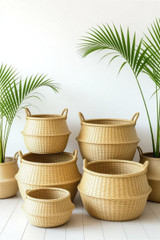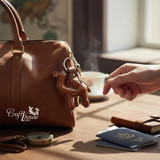Traditional Moroccan Mint Tea , Black tea with mint
The traditional Moroccan mint tea
A simple walk through the Dubai markets will have you tripping over fresh mint tea or even karak tea, or at least being offered a mug of hot, sweet mint tea. While pouring, lift the teapot high above the cup. Moroccans appreciate how this aerates their tea (and they always do it with panache).
There is some disagreement among historians regarding when Moroccan culture first introduced tea. Various scholars claim it was as recent as the 18th century, but others claim as early as the 12th century. Morocco is one of the top importers of tea in the world, if the latter theory is true, since Moroccans quickly adopted tea drinking as a norm. Moroccan cuisine and Moroccan hospitality have long been associated with mint tea, which in addition to being brewed with spearmint, also symbolizes Moroccan culture. Tea is frequently served to guests with or without food in many families, and both drop-ins and invited parties will expect to be welcomed by the drink. While Moroccan hospitality is based on Islamic etiquette, Moroccans are renowned for elevating that standard to an exceptional level. To avoid offending the host, even strangers and unexpected guests are encouraged to drink glass after glass of tea, and then pressed to stay for a full meal.
Homemade Ginger Root Tea
Moroccan tea making is more complicated than tea making in the West. This is how Moroccan tea is typically prepared behind the scenes. There is an elaborate ceremonial method of preparing tea in front of guests, most commonly used at formal, special occasions, but it is less common.
The Moroccan Tea Set
There are Moroccan tea glasses, a Moroccan teapot (berrad), and a serving tray in this Moroccan tea service. Almost every family owns a fine tea service used for special occasions and serving guests, as well as a more casual pot and glasses used daily for family and close friends. This is a middle-of-the-road arrangement that's neither too formal nor too casual to serve to people at tea time. Glasses with much more elaborate designs are often used.
Tea with green gunpowder and mint
For Moroccan tea, Chinese gunpowder green tea is preferred. In tea, the "gunpowder" refers to the compressed leaves; the more compact the leaves, the better the quality. Fresh gunpowder tea has a slight sheen, which indicates its freshness. Fresh spearmint leaves are also essential for mint tea, which is called na'na in Moroccan Arabic.
Morocco has many varieties of spearmint, depending on the region and season. The most popular mint tea ingredient is fresh spearmint, but dried peppermint leaves and fresh pennyroyal may also be used in smaller quantities to produce a more pungent tea. It is not only mint that is used to flavor Moroccan tea; other aromatic herbs such as sage, wormwood, lemon verbena, wild thyme, and wild geranium are also added.
Traditionally, Moroccan mint tea is sweet, so don't forget the sugar (unless you prefer less sweet due to health concerns). Sugar cones weighing two kilograms and sugar bricks weighing about 30 grams each are two of the forms of sugar most commonly used by Moroccans in their tea-making. Connoisseurs and traditionalists prefer sugar cones, but we will use sugar bricks since we don't want to break them up—the cones are pretty solid and require a kitchen ax to break them. Alternatively, you can use three sugar bricks instead of seven tablespoons of granulated sugar if you don't have access to either form of sugar. Many Moroccans will find that this amount of sugar is not enough to properly sweeten the large pot of tea that we'll make, but you may find it too much. You are free to adjust the quantity of sugar to your liking.
Get Start
Making tea requires boiling water, of course. Prepare the teapot by rinsing it out. Pour about a tea glass full of boiling water into the teapot with the gunpowder green tea (we're using two rounded tablespoons for a one-liter pot). After a minute, pour it out into a tea glass. You won't drain as much liquid as you poured in because the tea leaves swell and absorb some of the water. Before pouring the water, avoid swirling it around the pot to avoid dirtying it. It is this amber-colored liquid that contains full flavor from the water's first contact with the leaves that is called the "spirit" or "soul" of the tea. It will go back in the pot in a few minutes.
Prepare the tea leaves by washing them
Now you will wash the tea leaves and then add another tea glass full of water to the pot. Let it sit for a minute, then swirl it around the pot to wash it. Get rid of the murky liquid by pouring it out. the difference in color when comparing the undesirable rinse water to the clear, clean "spirit" which will go back into the pot.
Make Mint and other herbs ready
Now is the time to wash your mint if you haven't already. You can wash fresh mint (and other herbs) by immersing them in a bowl of water, swishing them around, then lifting them out to drain.
Sheba is also being prepared here to be added to the tea with the mint. Due to its strength, just a sprig or two is usually enough. Using a tea glass, pour boiling water over the sprig and let it soak for about a minute. By using this method, some of the bitterness associated with sheba can be removed. (Notice how the color of the sheba changes when it comes in contact with the hot water.)
Steep the tea for a while
Once the tea leaves and herbs have been washed, fill the pot about two-thirds full with boiling water and place over medium heat. Put the reserved "spirit" back into the pot.
Add the Mint and Sugar
As soon as bubbles appear on the surface of the tea, add a bowlful of fresh mint leaves and gently submerge them in the tea. The sheba is also included here. The pot should be quite full at this point; if not, top off the pot with a little more boiling water, but leave some room for boiling.
Boil The tea
Boil the tea until it reaches a boil. At first, mint leaves rise to the top, but as the liquids bubble and foam, the green tea leaves will break to the surface.
Taking the tea off the stove now is a good idea. You don't need to stir. It will be quite hot if the handle of your teapot is not heatproof. To pick up the pot and serve it, cover the handle with a cloth napkin.
Mix the Tea
In Moroccan tea, the just-steeped tea is poured into a glass and then poured back into the pot instead of stirring. It is recommended that you repeat this process four or five times. Mixing can be done in the kitchen or in front of guests.
In Moroccan teapots, loose tea leaves are prevented from spilling out through a built-in strainer. Hold a strainer over the glass as you pour if your own pot doesn't have this feature.
Also, a Moroccan teapot's long, curved spout provides accurate pouring from high above the glass, which helps to aerate the tea so that a desirable foam head will form.
Its Time To serve the tea
Once the tea has been mixed, it can be served. About two-thirds to three-quarters of the glasses should be filled with tea in a traditional Moroccan tea set. To get a nice foamy head, pour from an arm's length above each glass. Fresh mint leaves are sometimes placed directly in the glass of tea by Moroccans. It can be enjoyed with meals, dried fruits, nuts, and sweets, in addition to other Moroccan tea time recipes. Moroccan tea can be enjoyed with meals, dried fruits, nuts, and sweets, in addition to other Moroccan tea time recipes. Alternatively, you can serve without anything. In addition to mint, you can use other herbs or spices.
Recent Posts
-
Order the Best Boss Day Gifts for Male & Female Bosses in the UAE from Craftihouse.com
Every year, Boss’s Day is the perfect opportunity to show appreciation for the people who lead, ment …13th Oct 2025 -
How This Gift Came to Life: The Story Behind Our Palm Leaf Baskets
How This Gift Came to Life: The Story Behind Our Palm Leaf Baskets In a world where everything is be …8th Oct 2025 -
Handmade Leather Key Chains – Timeless Souvenirs & Everyday Companions
Handmade Leather Key Chains – Timeless Souvenirs & Everyday Companions Introduction In a world where …25th Sep 2025



